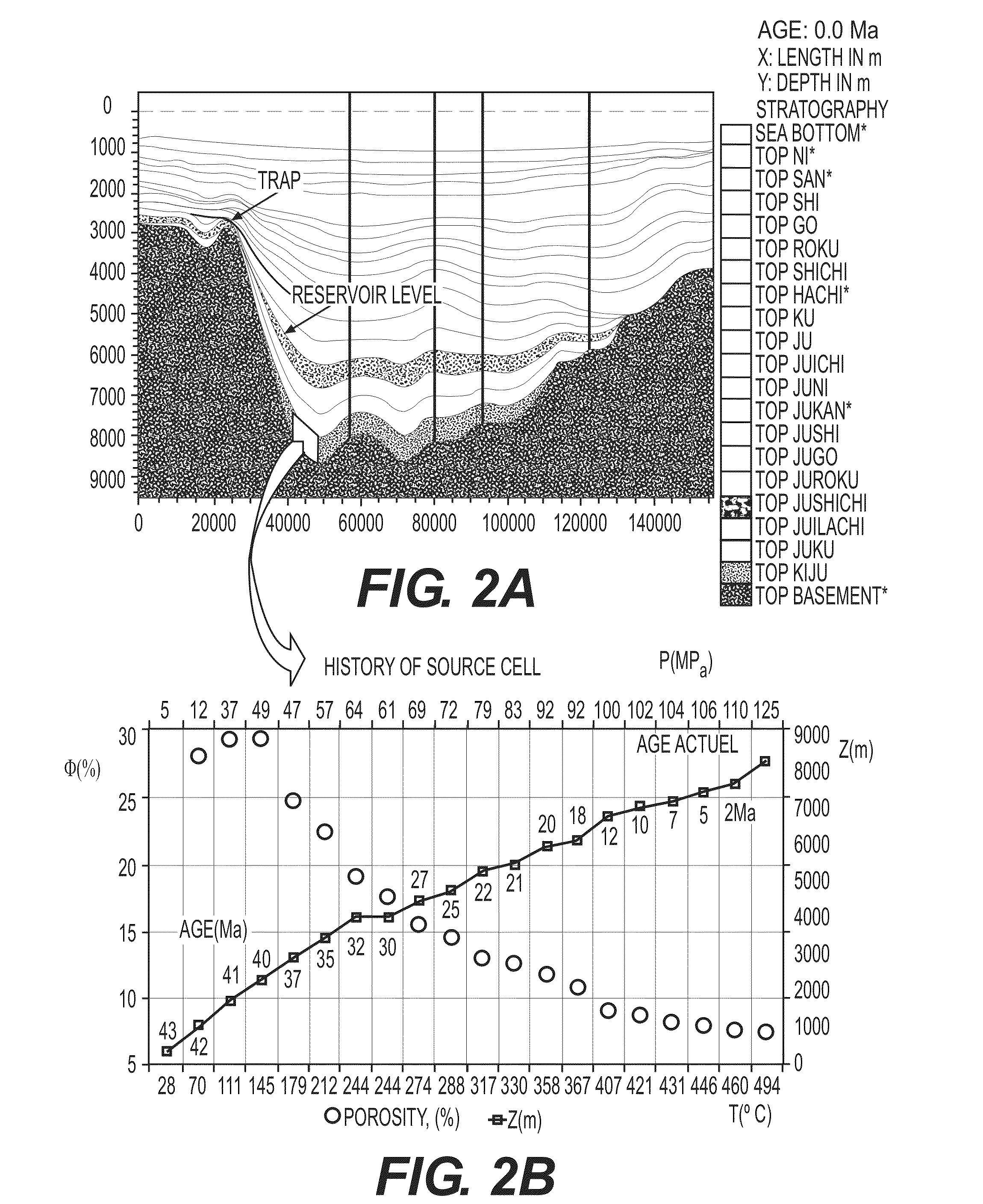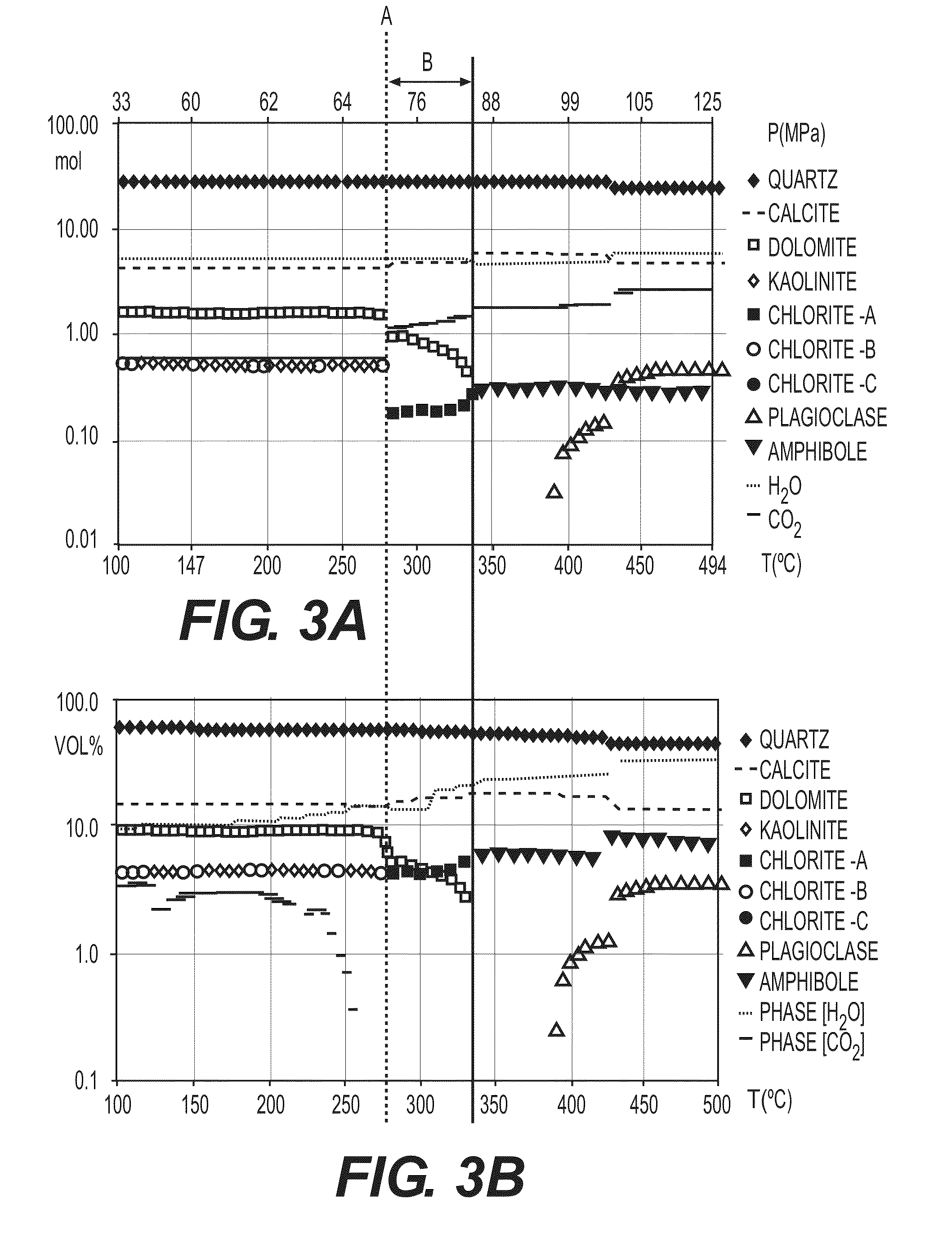Method of predicting the amount and the composition of fluids produced by mineral reactions operating within a sedimentary basin
a technology of mineral reaction and sedimentary basin, applied in the field of petroleum industry, can solve the problems of not being able to assess the behavior of a particular lithology, unable to reach the maximum hydrocarbon resource, and commercially unexploited reservoirs
- Summary
- Abstract
- Description
- Claims
- Application Information
AI Technical Summary
Benefits of technology
Problems solved by technology
Method used
Image
Examples
example
[0116]FIGS. 2 to 6 illustrate an application example for the method according to the invention. The geological characteristics according to this example are as follows:
[0117]Parameters Related to the Sedimentary Basin
[0118]FIGS. 2A and 2B respectively show a geologic section through the basin representation selected (3D grid) and the history of a source cell located in the deepest layer (deposited between 43 and 42 Ma).
[0119]For the source cell, the basin model is used to calculate the evolution of the depth (top of the cell), of the temperature, of the pressure and of the porosity throughout the 19 stages of the geological history, that is in the intervals contained between the 20 ages of the temporal description of the basin (43, 42, 41, 40, 37, 35, 32, 30, 27, 25, 22, 21, 20, 18, 12, 10, 7, 5 and 2 Ma before 0 Ma), and of the volume of the cell (not shown).
[0120]Mineralogical Composition of the Source Cell:
[0121]sandstone containing diagenetic carbonates, expressed with the chemi...
PUM
 Login to View More
Login to View More Abstract
Description
Claims
Application Information
 Login to View More
Login to View More - R&D
- Intellectual Property
- Life Sciences
- Materials
- Tech Scout
- Unparalleled Data Quality
- Higher Quality Content
- 60% Fewer Hallucinations
Browse by: Latest US Patents, China's latest patents, Technical Efficacy Thesaurus, Application Domain, Technology Topic, Popular Technical Reports.
© 2025 PatSnap. All rights reserved.Legal|Privacy policy|Modern Slavery Act Transparency Statement|Sitemap|About US| Contact US: help@patsnap.com



